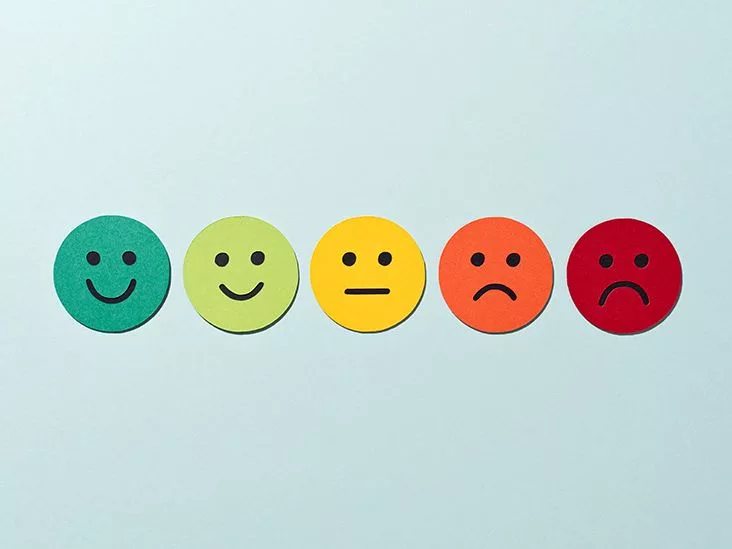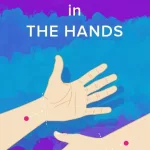Hey there—if you’re reading this, you probably already know that living with bipolar disorder can feel a bit like trying to steer a ship through ever‑changing weather. One moment the sky is bright, the next you’re battling a storm. bipolar mood tracking is that trusty compass many of us wish we had from day one. In a few quick minutes each day you can capture what you’re feeling, spot patterns before they become full‑blown episodes, and give your doctor solid data instead of vague “I feel off” reports.
Below you’ll find a step‑by‑step guide that blends the science you need with the everyday practicality you want. Think of it as a friendly chat where I share tools, stories, and a few tips that have helped the folks I’ve worked with—or even myself—stay a little steadier on the emotional roller‑coaster.
What Is Tracking?
Definition and Core Pieces
At its simplest, bipolar mood tracking means recording a few key variables about how you feel each day. Most trackers ask for:
- Mood rating – a number or colour that tells you where you sit on the “depressed‑to‑manic” spectrum.
- Energy & outlook – how much pep you have and whether you feel hopeful or hopeless.
- Sleep – hours and quality, because sleep is a major trigger.
- Medication & dosage – a quick check that you’ve taken what was prescribed.
- Lifestyle notes – caffeine, alcohol, exercise, stressful events, even your menstrual cycle.
Paper vs. Digital Formats
Some people love the tactile feel of a paper chart. Others swear by a mobile app that instantly creates graphs. Both approaches work; the secret is consistency. For a printable example, check out the UCI Mood Tracker PDF that many clinicians still recommend. It’s a simple grid you can stick on your fridge.
Why Clinicians Like It
Doctors need more than a vague description of “feeling up or down.” Consistent data lets them see:
- Whether a medication adjustment is actually helping.
- How long a particular mood episode tends to last for you.
- What external factors (sleep loss, stress, hormonal changes) are nudging you toward mania or depression.
According to a 2023 longitudinal study, patients who kept a daily mood chart were 30 % less likely to need emergency hospitalization. The numbers tell a story; the charts tell the story in real time.
Why Track?
Spot Early Warning Signs
Imagine you notice that every time you skip a night of sleep you start feeling “wired” the next day. That pattern might be your “red‑zone” alert that a manic swing is brewing. Tracking helps you catch those subtle links before they snowball.
Talk the Same Language as Your Doctor
When you hand over a neatly‑graphed sheet, you’re basically saying, “Here’s the data, let’s decide together.” One eMoods user wrote, “It gave my psychiatrist a clear picture in seconds, and we changed my prescription before the next episode hit.” eMoods is praised for exactly that—easy export, clear graphs, and a note‑field for anything you think is relevant.
Boost Confidence and Motivation
Seeing a line gradually climb from “low” to “stable” can be incredibly uplifting. It turns abstract feelings into visible progress, reminding you that you’re not just drifting—you’re actively steering.
Real‑World Example
Sarah, a 32‑year‑old graphic designer, stopped using mood apps after a year because they felt “too clinical.” She switched to a printable diary (the same UCI chart) and added a tiny “emoji” next to each entry. After a month, she realized that her “rainy‑day” mood spikes always followed late‑night coffee runs. Cutting back on caffeine gave her a smoother week, and she felt a genuine sense of control.
Potential Risks
Obsessive Focus
It’s easy to become a “data‑monster,” checking numbers every few minutes and feeling anxious if a day looks “off.” If that happens, try a weekly summary instead of a daily one, or set a reminder to stop after a set time.
Privacy Concerns
Digital apps store sensitive health info. Choose platforms that use encryption and offer a way to delete your data. If privacy feels shaky, the old‑school paper method is still gold—just keep it in a drawer only you (and maybe your therapist) can open.
Inaccurate Self‑Reporting
We’re all human; sometimes we forget to log or we rate ourselves more harshly than we feel. Pair your entries with “anchor events”—like “took new med X” or “went to therapy.” Those concrete notes help calibrate your scores.
Choosing a Tool
Paper‑Based Options
If you love the feel of a pen, start with one of these free PDFs:
Free / Low‑Cost Apps
Here are three apps that keep the balance between usability and privacy:
- eMoods – customizable mood states, exportable CSV, clinician‑friendly graphs.
- MoodChart.org – email‑reminder system, option for retrospective (4‑year) charts. MoodChart also offers a simple “daily click‑through” that takes seconds.
- BeatingBipolar – research‑backed, includes sleep and anxiety tracking, but still free for personal use.
Paid / Clinical Platforms
If you’re working closely with a mental‑health team, consider platforms that integrate directly with electronic health records, such as Optimism or the newer “Psych Direct” suite. They usually carry a subscription fee but offer clinician dashboards and data‑security guarantees.
Feature Comparison
| Tool | Cost | Platform | Export Options | Privacy |
|---|---|---|---|---|
| UCI Mood Tracker (PDF) | Free | Paper | Manual copy / photo | High (offline) |
| eMoods | Free (premium add‑ons) | iOS / Android | CSV, PDF | Encrypted |
| MoodChart.org | Free | Web + Email | CSV, PDF | Encrypted, login required |
| Optimism | Subscription | iOS / Android / Web | CSV, HL7 | HIPAA‑compliant |
Set Up Your Own Diary
Pick a Scale That Fits
Some folks love a 0‑100 numeric slider; others prefer colour bands (red = danger, yellow = caution, green = stable). The key is to pick one you’ll actually use. If you’re unsure, start with the simple “Manic‑Depressed” three‑point scale and evolve later.
Decide Frequency
Most clinicians recommend at least one entry per day, preferably after you’ve slept (morning reflection). If you notice rapid swings, add a “mid‑day” check‑in. The goal is consistency, not perfection.
Record Essential Data
Use the following checklist for each entry:
- Mood score (your chosen scale).
- Energy/outlook – “high,” “average,” “low.”
- Hours slept – plus quality notes (“wakeful,” “restful”).
- Medication – name and dose, tick if taken.
- Lifestyle snapshots – coffee, alcohol, exercise, stressful events, menstrual cycle.
Sample Entry (PDF Template)
Download a ready‑made template that merges the UCI chart layout with the Bipolar UK diary fields here. Fill it out each night; a quick “tick‑box” takes less than a minute.
Weekly Review
Every Sunday, glance at the past week’s graph. Look for three‑day patterns: two “green” days followed by a sudden “red” might indicate a trigger you missed. Jot a brief note “possible trigger: late‑night Netflix binge.” This habit turns raw data into insight.
Share With Your Clinician
Most doctors ask for a one‑page summary before appointments. Export your digital chart as a PDF or snap a photo of your paper sheet. Bring it to the session and let the conversation focus on treatment, not on “how are you?”
Expert Tips & Resources
Psychiatrist Insight
Dr. Lena Morales, board‑certified psychiatrist, says, “When starting a new mood stabilizer, I ask patients to log mood and sleep for at least two weeks. The chart tells me if the med is working or if we need to tweak the dose.” Her advice underscores how tracking becomes a collaborative tool rather than a solo chore.
Peer‑Support Recommendation
The Bipolar UK Peer Support Line offers volunteers who can walk you through setting up a diary, answer questions about apps, and share stories that make you feel less alone.
Further Reading
If you want to dive deeper into the science behind mood charts, the NeuroLaunch guide to mood charts breaks down the neurobiology of mania and depression and explains why a simple graph can be a powerful therapeutic ally.
Wrap‑Up
Let’s recap the main takeaways:
- Track consistently. A few minutes each day give you a clear picture of your emotional weather.
- Pick the tool that fits your life. Whether it’s a printable PDF on your fridge or a sleek app on your phone, the best tool is the one you’ll actually use.
- Stay balanced. Use the data as a guide, not a judgment. The goal is empowerment, not obsession.
Ready to give it a try? Grab a free mood chart, set a daily reminder, and see what patterns emerge. You might be surprised at how much insight a single line on a graph can give you.
What’s your experience with mood tracking? Have you found a tool that feels “just right,” or are you still searching? Drop a comment below—your story could help the next person on the page. And if you have any questions, feel free to ask. We’re all in this together.


















Leave a Reply
You must be logged in to post a comment.